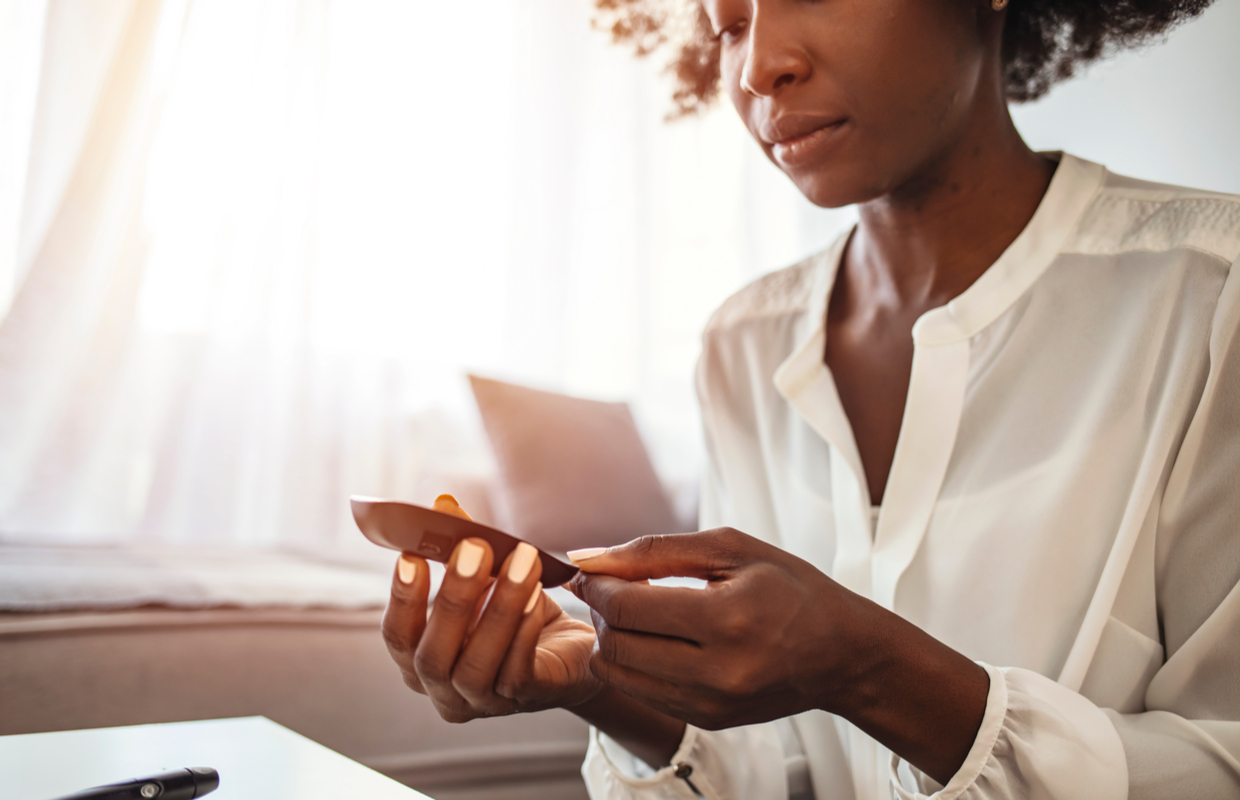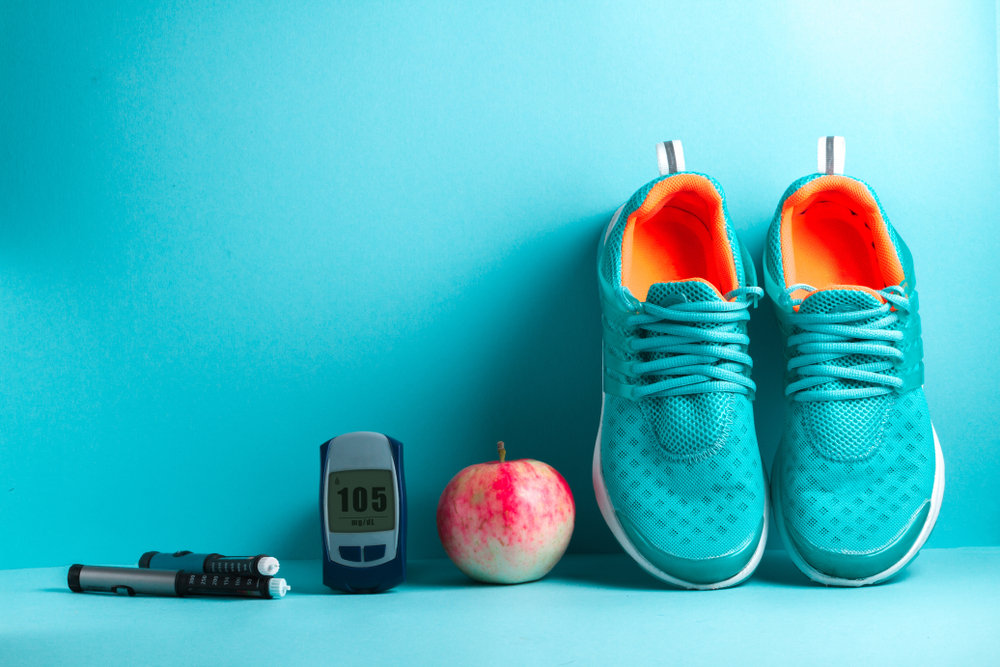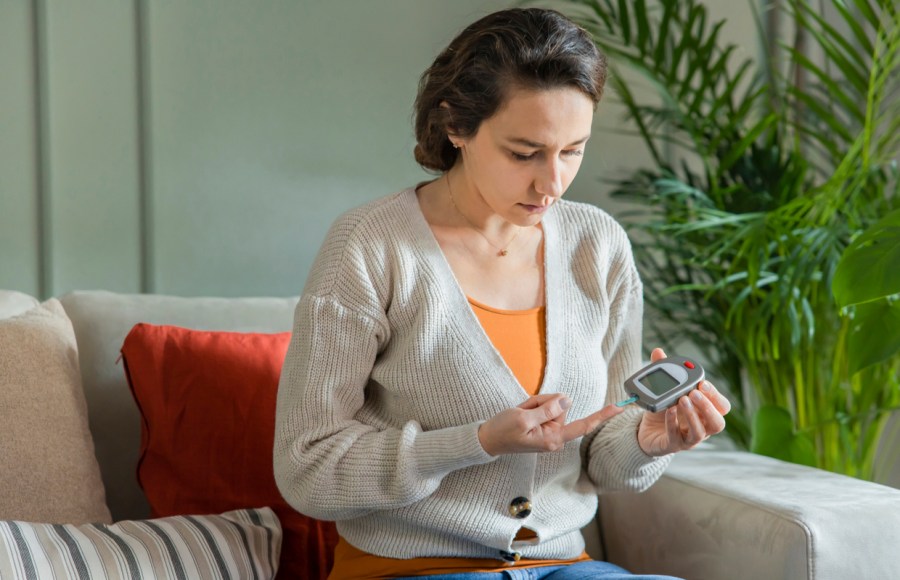Whether you’re simply curious to learn more about diabetes or you are concerned about your own risk, freelance writer and diabetic Alice Dogruyol is here to explain the difference between type 1 and type 2 diabetes, before explaining what to do if you think you’re at risk…
What’s the difference between type 1 and type 2 diabetes?
While type 1 diabetes is a rare, incurable, autoimmune disease where body can’t make insulin, type 2 diabetes a metabolic disease with your body unable to effectively use the insulin it’s producing.
Let’s take a closer look at the difference between type 1 and type 2 diabetes…

What is type 1 diabetes?
Type 1 diabetes is much rarer than type 2 – only about eight per cent of people with diabetes have type 1 diabetes, according to Diabetes UK. Type 1 is a rare, incurable, autoimmune disease where your blood sugar is too high because your body can’t make insulin hormone. It is not triggered by poor diet or lifestyle choices, or a high BMI.
How is type 1 diabetes managed?
A life-long disease, type 1 diabetics are insulin dependent and require multiple daily injections of insulin every day to survive. If insulin injection quantities are miscalculated, too much results in dangerously low blood sugar (hypoglycaemia) which can be fatal unless you quickly elevate levels by consuming sugar.
Too little insulin means blood glucose becomes too high (hyperglycaemia), over time causing heart attack, blindness or nerve damage. Type 1 diabetes is often diagnosed in childhood but the disease can occur at any age. Genetics may make you susceptible, and research is ongoing into whether viruses, such as human enteroviruses, trigger it.
How to help someone with type 1 diabetes
If you notice a type 1 diabetic friend appearing confused, trembling, perspiring, dizzy, slurring their words or nearly passing out, they may be having a hypoglycemic episode. As it’s potentially life threatening, you could save their life by giving them sugar to eat or drink!
Eating a handful of sweets, drinking a small can of full-sugar fizzy drink or a glass of fruit juice can stop a hypo. Thankfully, hypos are more manageable with constant blood sugar devices such as the Free Style Libre or Dexcom. These sound an alarm when blood sugar falls too low.

What is type 2 diabetes?
With type 2 diabetes making up about 92 percent of diabetes cases, it’s the one you usually hear about. It’s a metabolic disease with your body unable to effectively use the insulin it’s producing. Insulin is released into your blood when glucose levels rise, such as after eating. Insulin helps process glucose into cells for energy, and regulates levels in the bloodstream.
What causes type 2 diabetes?
In type 2 diabetes, your cells become resistant to insulin, so excess glucose circulates in your blood, which is bad for health. Over time, high blood sugar damages your body, often starting with the feet and eyes, even leading to toe, foot or leg amputations and sight loss.
Type 2 diabetes is usually triggered by unhealthy diet and lifestyle choices in people genetically predisposed. New research shows that dietary and lifestyle changes can put type 2 into remission.
What to do if you think you might have diabetes:
If you’re worried about diabetes, ask your GP about the following blood tests:
- HbA1c shows your average blood glucose level for the past two to three months. A normal HbA1c reading should be below 42 mmol (6 per cent). ‘Mine was 84 mmol when diagnosed with type 1,’ says Alice.
- Fasting serum glucose test gives a current snapshot of your blood glucose level. A normal level is between 3.9 and 5.4 mmols (70-99 mg/dl).
- (Type 1 only) GAD Antibody – The range is from 0-10.9. ‘My diagnosis was more than 2,000!’ says Alice.
- (Type 1 only) IA2 Antibody – The range is from 0-7.49. ‘Mine was more than 4,000.’
- (Type 1 only) Zinc Transporter 8 Antibody– The range is from 0-9.9. ‘My result at diagnosis was 907.40!’ Alice adds.

Check your diabetes risk:
By understanding your own personal risk, you can access support to help take steps to reduce your chances of developing type 2 diabetes. Firstly, head to the free online Know Your Risk tool. Once completed, the tool advises you on your risk and suggests next steps. Those in England who are advised to be at moderate or high risk may then directly sign up to the Healthier You: NHS Diabetes Prevention Programme (NHS DPP).
Read up on diabetes:
This book and Instagram account (@glucosegoddess) from biochemist Jessie Inchauspé are a constant source of information, inspiration and practical tips on how to keep blood sugar balanced, manage health and promote longevity.
Endorsed by Professor Tim Spector, professor of genetic epidemiology at King’s College London, The Glucose Revolution book analyses decades of research to help you take control of your health. Visit glucose-revolution.com.







